
Under a White Sky: The Nature of the Future
by
Elizabeth Kolbert
Published 15 Mar 2021
Just a hundred and sixteen scenarios were consistent with holding warming under 2°C, and of these, a hundred and one involved negative emissions. Following Paris, the IPCC produced another report, based on the 1.5°C threshold. All of the scenarios consistent with that goal relied on negative emissions. “I think what the IPCC really is saying is, ‘We tried lots and lots of scenarios,’ ” Klaus Lackner told me. “ ‘And, of the scenarios which stayed safe, virtually every one needed some magic touch of negative emissions. If we didn’t do that, we ran into a brick wall.’ ” * * * — Climeworks, the company I paid to bury my emissions in Iceland, was founded by two college friends, Christoph Gebald and Jan Wurzbacher.
…
This would entail, for starters: revamping agricultural systems, transforming manufacturing, scrapping gasoline- and diesel-powered vehicles, and replacing most of the world’s power plants. Carbon dioxide removal offers a way to change the math. Extract large amounts of CO2 from the atmosphere and “negative emissions” could, conceivably, balance out the positive variety. It might even be feasible to cross the threshold of catastrophe and then suck enough carbon out of the air to keep calamity at bay, a situation that’s become known as “overshoot.” * * * — If anyone can be said to have invented “negative emissions,” it’s a German-born physicist named Klaus Lackner. Lackner, who’s now in his late sixties, is a trim man with dark eyes and a prominent forehead.
…
the United States is responsible: All figures on aggregate emissions are taken from Hannah Ritchie, “Who Has Contributed Most to Global CO2 Emissions?” Our World in Data (Oct. 1, 2019), ourworldindata.org/contributed-most-global-CO2. a hundred and one involved negative emissions: Sabine Fuss et al., “Betting on Negative Emissions,” Nature Climate Change, 4 (2014), 850–852. All of the scenarios consistent with that goal: J. Rogelj et al., “Mitigation Pathways Compatible with 1.5°C in the Context of Sustainable Development,” in Global Warming of 1.5°C: An IPCC Special Report, V. Masson-Delmotte et al., eds., Intergovernmental Panel on Climate Change (Oct. 8, 2018), ipcc.ch/site/assets/uploads/sites/2/2019/02/SR15_Chapter2_Low_Res.pdf.

The Uninhabitable Earth: Life After Warming
by
David Wallace-Wells
Published 19 Feb 2019
This is one reason a single-shot cure-all offers an undeniable appeal—which brings us back to that magic phrase, “negative emissions.” Neither negative-emissions method—“natural” approaches involving revitalized forests and new agricultural practices, technological ones that would deploy machines to remove carbon from the atmosphere—requires wholesale transformation of the global economy as it is presently constituted. Which is perhaps why negative emissions, once a last-ditch, if-all-else-fails strategy, have recently been built into all conventional climate-action goals. Of 400 IPCC emissions models that land us below two degrees Celsius, 344 feature negative emissions, most of them significantly.
…
the Chinese example: Yann Robiou du Pont and Malte Meinshausen, “Warming Assessment of the Bottom-Up Paris Agreement Emissions Pledges,” Nature Communications, November 2018. “limited realistic potential”: European Academies’ Science Advisory Council, Negative Emission Technologies: What Role in Meeting Paris Agreement Targets? (Halle, Ger., February 2018), p. 1, https://easac.eu/fileadmin/PDF_s/reports_statements/Negative_Carbon/EASAC_Report_on_Negative_Emission_Technologies.pdf. “magical thinking”: “Why Current Negative-Emissions Strategies Remain ‘Magical Thinking,’ ” Nature, February 21, 2018, www.nature.com/articles/d41586-018-02184-x. full-scale carbon capture plants: Andy Skuce, “ ‘We’d Have to Finish One New Facility Every Working Day for the Next 70 Years’—Why Carbon Capture Is No Panacea,” Bulletin of the Atomic Scientists, October 4, 2016, https://thebulletin.org/2016/10/wed-have-to-finish-one-new-facility-every-working-day-for-the-next-70-years-why-carbon-capture-is-no-panacea.
…
Which is why staying below 2 degrees probably requires not just carbon scale-back but what are called “negative emissions.” These tools come in two forms: technologies that would suck carbon out of the air (called CCS, for “carbon capture and storage”) and new approaches to forestry and agriculture that would do the same, in a slightly more old-fashioned way (bioenergy with carbon capture and storage, or “BECCS”). According to a raft of recent papers, both are something close to fantasy, at least at present. In 2018, the European Academies’ Science Advisory Council found that existing negative-emissions technologies have “limited realistic potential” to even slow the increase in concentration of carbon in the atmosphere—let alone meaningfully reduce that concentration.
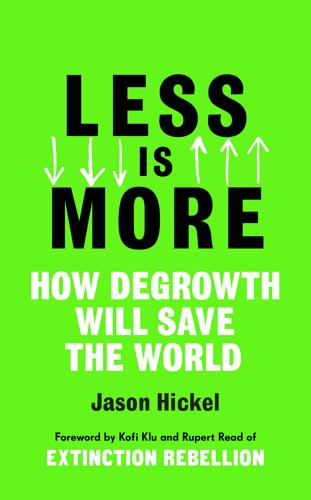
Less Is More: How Degrowth Will Save the World
by
Jason Hickel
Published 12 Aug 2020
Benson, ‘Carbon dioxide capture and storage: issues and prospects,’ Annual Review of Environment and Resources, 39, 2014, pp. 243–270. 4 Sabine Fuss et al., ‘Betting on negative emissions,’ Nature Climate Change 4(10), 2014, pp. 850–853. 5 Pete Smith et al., ‘Biophysical and economic limits to negative CO2 emissions,’ Nature Climate Change 6(1), 2016, pp. 42–50. 6 Kevin Anderson and Glen Peters, ‘The trouble with negative emissions,’ Science 354(6309), 2016, pp. 182–183. 7 Vera Heck, ‘Biomass-based negative emissions difficult to reconcile with planetary boundaries,’ Nature Climate Change 8(2), 2018, pp. 151–155. 8 Pete Smith et al., ‘Biophysical and economic limits to negative CO2 emissions,’ Nature Climate Change 6(1), 2016, pp. 42–50. 9 ‘Six problems with BECCS,’ FERN briefing, 2018. 10 Henry Shue, ‘Climate dreaming: negative emissions, risk transfer, and irreversibility,’ Journal of Human Rights and the Environment 8(2), 2017, pp. 203–216. 11 Hickman, ‘The history of BECCS. 12 Daisy Dunne, ‘Geo-engineering carries ‘large risks’ for the natural world, studies show,’ Carbon Brief, 2018. 13 See the Climate Equity Reference Calculator at calculator.climateequityreference.org. 14 PwC forecasts that global GDP will grow by an average of 2.6% per year to 2050 (reaching a total of 2.15 times larger).
…
See also Dominik Wiedenhofer et al., ‘A systematic review of the evidence on decoupling of GDP, resource use and GHG emissions,’ Environmental Research Letters, 2020. 37 ‘Survey of young Americans’ attitudes toward politics and public service,’ Harvard University Institute of Politics, 2016. 38 Edelman Trust Barometer, 2020. 39 According to the same 2015 YouGov poll mentioned earlier in the paragraph. 40 Yale Climate Opinion Maps, Yale Program on Climate Change Communication. 41 Stefan Drews et al., ‘Challenges in assessing public opinion on economic growth versus environment: considering European and US data,’ Ecological Economics 146, 2018, pp. 265–272. 42 The New Consumer and the Sharing Economy, Havas, 2015. 43 ‘The EU needs a stability and well-being pact, not more growth,’ Guardian, 2018. 44 William Ripple et al., ‘World scientists warn of a climate emergency,’ BioScience, 2019. 45 World Inequality Database. 46 The lead scenario in the IPCC’s 2018 report relies on declining material and energy throughput. This is the only scenario for staying under 1.5°C or 2°C that does not rely on speculative negative-emissions technologies. The underlying paper is Arnulf Grubler et al., ‘A low energy demand scenario for meeting the 1.5 C target and sustainable development goals without negative emission technologies,’ Nature Energy 3(6), 2018, pp. 515–527. For my take on this scenario, see Hickel and Kallis, ‘Is green growth possible?’ 47 See: Serge Latouche, Farewell to Growth (Polity, 2009); Giorgos Kallis, Christian Kerschner and Joan Martinez-Alier, ‘The economics of degrowth,’ Ecological Economics 84, 2012, pp. 172–180; Giacomo D’Alisa et al., eds., Degrowth: A Vocabulary for a New Era (Routledge, 2014); Giorgos Kallis, Degrowth (Agenda Publishing, 2018). 48 For a history and overview of degrowth, see Kallis, Degrowth; for global South perspectives see Arturo Escobar, ‘Degrowth, postdevelopment, and transitions: a preliminary conversation,’ Sustainability Science, 2015. 49 For this framing I am indebted to Timothy Morton, Ecology Without Nature (Harvard University Press, 2007).
…
For some, it is a simple matter of switching the global economy to renewable energy and electric cars; once we do that, there’s no reason we can’t keep growing for ever. After all, solar and wind power are getting cheaper all the time, and Elon Musk has shown that it’s possible to mass-produce storage batteries at a rapid clip. For others, it’s a matter of ‘negative-emissions technologies’ that will pull carbon out of the atmosphere. Still others bank on the hope of enormous geo-engineering schemes: everything from blocking out the sun to changing the chemistry of the oceans. Of course, even if these solutions succeed in stopping climate change, continued growth will still drive continued material use, and continued ecological breakdown.
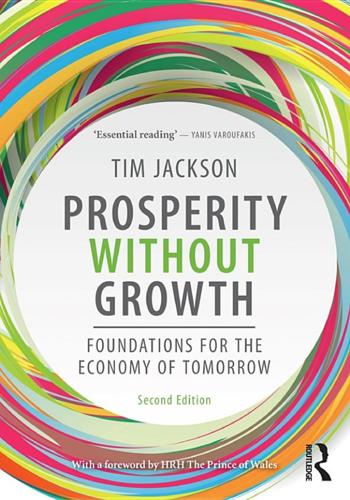
Prosperity Without Growth: Foundations for the Economy of Tomorrow
by
Tim Jackson
Published 8 Dec 2016
A deeper cut definitely makes life easier in the long run, with a lower requirement for negative emissions in the second half of the century. But it doesn’t do much to contain the need for negative emissions in the short term, which still peak at around 25 GtCO2 in the late 2020s. A far better option, it turns out, would be to choose an earlier year for the target reduction. Let’s say we aimed to hit our reduction target in 2035 rather than in 2050. This would about halve the peak demand for negative emissions. But it would clearly also involve us in a frantic rush to introduce low carbon technologies at an even faster pace.
…
Assuming we started straight away and achieved a more or less linear reduction in emissions towards 3.6 GtCO2 by 2050, the carbon budget associated with the target (Chapter 1) would be used up by 2025, and beyond that point we would need technologies and strategies that could take carbon out of the atmosphere faster than we added carbon to it, in order to have a decent chance of restricting global temperature rise to less than 1.5°C. On a closer examination, the rate of ‘negative emissions’ required to stay within the carbon budget is daunting. Through the late 2020s and early 2030s we would need to be taking carbon out of the atmosphere at a rate of around 25 GtCO2 a year. The potential to achieve this level of negative emissions on that timescale is highly speculative at the very least.33 One option would be to go for an even deeper reduction target. Let’s suppose we went for 95 per cent reduction in carbon emissions rather than 90 per cent by 2050.
…
Online at http://unfccc.int/resource/docs/2015/cop21/eng/l09.pdf (accessed 29 December 2015). 44 IPCC (2014: 64, table 2.2). See also figure SPM 10, pp. SPM 18–19. For a discussion of the adequacy of this budget and an even more stringent estimate of the available carbon budget, see Rogelj et al. (2016). 45 Negative emission technologies include for instance: bio-energy with carbon capture and storage, biochar, direct air capture or enhanced weathering. On the challenges of these negative emission technologies, see for example Smith et al. (2016). Carbon dioxide emissions for 2015 were (estimated at) 35.7 Gt CO2 (Lequéré et al. 2015: 374). In Chapter 5 we explore the implications of these targets for the carbon intensity of the economy, under different assumptions about economic growth. 46 See McGlade and Ekins (2015), Meinshausen et al. (2009).
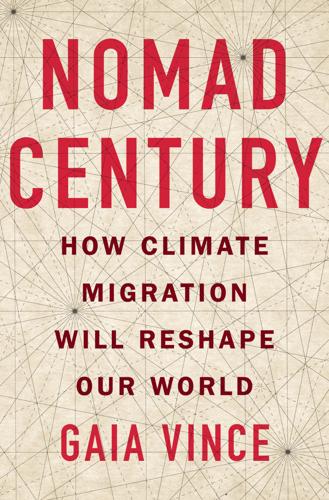
Nomad Century: How Climate Migration Will Reshape Our World
by
Gaia Vince
Published 22 Aug 2022
Obviously, we need to stop adding to the problem, which means not burning fossil fuels and preventing the world’s soils from releasing their carbon stores when they’re broken down during agriculture, drought, deforestation or heat. We also need to remove from the atmosphere the carbon we’ve already emitted, through restorative planting and making sure the carbon that is removed is locked away. Forests do this so-called ‘negative emissions activity’ until they are chopped down or burned; sea grasses are excellent at locking carbon down into the seabed. Another strategy is to take vegetation – and this could be corn stubs or other agricultural waste – and heat it in the absence of oxygen to produce charcoal (‘biochar’), which is a solid form of carbon that can be buried in soils to enrich them.
…
The land can then be used to grow more vegetation, withdrawing more carbon each time. The trade-off is that this agricultural waste cannot be fed to animals, mulched or used for other purposes. Bioenergy with carbon capture and storage – usually called ‘BECCS’ – is extremely popular with governments and corporations hoping for cheap negative-emissions technologies to offset their emissions. BECCS involves growing plants for fuel, burning them in power stations and capturing the carbon dioxide produced, which can then be stored safely. The problem is that the amount of land needed to make a significant difference to our net global emissions is vast – by some estimates as much as 80 per cent of current cropland – and as we’ve seen, it is needed for food and wildlife.
…
The reverse: we only need to consider these expensive cooling techniques because we’re continuing to heat the planet with carbon dioxide. Solar reflection wouldn’t address some underlying problems resulting from too much carbon in the atmosphere, such as ocean acidification, but it would buy us more time to decarbonize and achieve negative emissions. Crucially, keeping the Earth cooler for longer would help the poorest people to adapt and alleviate poverty, which is vital morally and to restore ecosystems. Meanwhile, the effective capture from the air of today’s carbon emissions can be scaled up. Everything we need to do to move into a net zero global economy, the increase in biodiversity we are aiming for, the improvements to people’s lives and well-being … everything would be easier in a world not also burdened with a catastrophic climate, frequent extreme weather events, drought and heatwaves.

The Climate Book: The Facts and the Solutions
by
Greta Thunberg
Published 14 Feb 2023
In BECCS, you gather or harvest plant biomass, burn it to produce electricity (or convert it into biofuels) and pump the carbon dioxide pollution underground to keep it out of the atmosphere. Of all the drawdown or negative emissions technologies, BECCS is the only one that provides energy rather than requiring it (and, done carefully, can provide it close to carbon free). Like all climate solutions at the billion-tonne scale, BECCS has issues: it’s land and water intensive and, as with all underground waste pumping, you have to monitor the reservoir for decades to make sure the CO2 stays put. Still, BECCS is relatively cheap by negative emission standards (around $50–$200 per tonne of CO2 stored) and facilities already operate commercially today.
…
Thirty-one years after the first IPCC report on climate change, the Blue Zone – the formal, gated venue where negotiations take place and governments showcase their ‘climate action’ – is a microcosm of three decades of failure: of rapidly rising emissions, of climate denial, of expedient technical optimism, of ‘negative emissions’ and, today, of ‘net zero, but not in my term of office’. Where is the concern for vulnerable communities already suffering climate impacts, for species extinction, for exchanging rich biodiversity for monocropped wastelands? Where is the concern for our own children’s futures? How did we end up here?
…
Put bluntly, when emissions are cut at lower rates than is necessary, this is not a step in the right direction. Rather, it is a step backwards – just not as large a step backwards as it would otherwise have been. It is this relentless backsliding that has given rise to increasingly elaborate forms of ‘mitigation denial’, whereby we rely on ever more speculative forms of ‘negative emissions’. These range from future carbon-sucking technologies and simplistic ‘nature-based-solutions’ through to paying poor countries to further cut their emissions on our behalf. All such ruses are designed, in significant part, to ‘offset’ the responsibility we have to make profound cuts in emissions today.
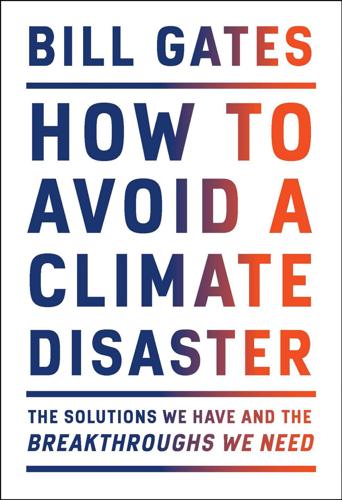
How to Avoid a Climate Disaster: The Solutions We Have and the Breakthroughs We Need
by
Bill Gates
Published 16 Feb 2021
Which countries and sectors of the economy would get to use the remaining 1 percent? How would we even decide something like that? In fact, to avoid the worst climate scenarios, at some point we’ll not only need to stop adding more gases but actually need to start removing some of the gases we have already emitted. You may see this step referred to as “net-negative emissions.” It just means that eventually, we’ll need to take more greenhouse gases out of the atmosphere than we put in so that we can limit the temperature increase. To return to the bathtub analogy from the introduction: We won’t just shut off the flow of water into the tub. We’ll open up the drain and let water flow out too.
…
Another approach that various companies are working on is to get carbon from plants. Finally, we’d need a zero-carbon source of heat—which would likely also be clean electricity, hydrogen, or natural gas fitted with a device to capture the carbon it emits. If all these pieces come together, we could make plastics with net-negative emissions. In effect, we’d find a way to take carbon out of the air (using plants or some other method) and put it into a bottle or other plastic product, where it would stay for decades or centuries, with no additional emissions. We’d be socking away more carbon than we were putting out. Beyond finding ways to make materials with zero emissions, we can simply use less stuff.
…
Department of Energy, “Computing America’s Offshore Wind Energy Potential,” Sept. 9, 2016, www.energy.gov. In his fantastic 2009 book: David J. C. MacKay, Sustainable Energy—Without the Hot Air (Cambridge, U.K.: UIT Cambridge, 2009), 98, 109. And in all likelihood: Consensus Study Report, “Negative Emissions Technologies and Reliable Sequestration: A Research Agenda,” National Academies of Science, Engineering, and Medicine, 2019. Chapter 5: How We Make Things Each weighs thousands of tons: Washington State Department of Transportation, www.wsdot.wa.gov. Photo: WSDOT. The next time you see: “Statue Statistics,” Statue of Liberty National Monument, New York, National Park Service, www.nps.gov.
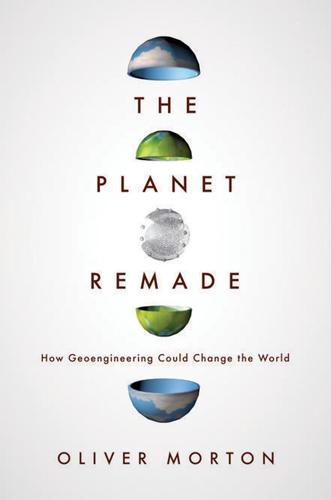
The Planet Remade: How Geoengineering Could Change the World
by
Oliver Morton
Published 26 Sep 2015
As mentioned in Chapter Six, for a good chance – two-to-one, say – of keeping warming below 2ºC, the world may well need to do more, at this stage, than simply cut emissions to zero; it may well need to go into ‘negative emissions’. And BECCS, relying as it does on something proven – the burning of biomass – and something more or less available – CCS – is the only technology for large-scale negative emissions that currently looks even remotely plausible.* It was because its authors felt that they had to talk about negative emissions that the most recent IPCC report gave geoengineering a prominence in its conclusions that greatly perturbed critics such as the ETC group.
…
.* It was because its authors felt that they had to talk about negative emissions that the most recent IPCC report gave geoengineering a prominence in its conclusions that greatly perturbed critics such as the ETC group. Like many people and institutions that care about sustainable agriculture, food security and the rights of indigenous people, ETC hates industrial-scale biomass energy even when it has no geoengineering attached. That negative emissions are likely to be necessary if the chances of two degrees of warming are to be kept low surprises many people. There is a widespread belief that simply stabilizing emissions – emitting the same amount every year – solves the warming problem. But if the world stabilizes its emissions, it is still adding to the stock of carbon in the atmosphere, and it’s the stock that sets the temperature.
…
If you are not going to indulge in some form of sunshine geoengineering, the only way to stop the warming is to bring emissions to zero. What would happen then? There would be a little helpful sucking up in the decades that followed as the biosphere and the oceans settled into a new equilibrium. But once that equilibrium was reached the carbon-dioxide level would, in the absence of negative emissions, sit more or less where it was for a long, long time. It would only be brought down by the slow processes of mineral weathering and carbonate deposition in the oceans – the processes that regulate the Earth’s carbon-dioxide levels over the geological long term. Models of the carbon cycle suggest that such a decline would take thousands of years – quite possibly tens of thousands.

How to Spend a Trillion Dollars
by
Rowan Hooper
Published 15 Jan 2020
This itself comes in three flavours: a biological or natural kind, which usually means planting more trees, or growing more plants in the ocean; a technological kind, which means extracting carbon dioxide from the air and burying it underground forever; and a hybrid techno-natural way, which means growing plants for fuel and then catching and burying the carbon dioxide produced when the fuel is burned. As with solar geoengineering, we don’t yet know if this ‘negative emissions’ technology of carbon dioxide removal will work well enough at scale, or be cost-effective. However, just the idea that negative emissions might one day work on a significant scale justifies the Intergovernmental Panel on Climate Change (IPCC) in its claim that we may be able to limit warming to 2 or even 1 degrees. As well as the massive emissions cuts that the IPCC models say we need to make, we also need to start capturing and storing carbon dioxide in vast amounts.
…
One of the less-known details of international climate agreements, and of the IPCC scenarios for future warming, is that many of the predictions for temperature rises assume that by the second half of this century we will start removing large quantities of carbon dioxide from the atmosphere. This is known both as CDR – carbon dioxide removal – and NET, negative emissions technologies. The big problem is that we can’t do this yet at any kind of scale to make a difference. For all its world-changing power, carbon dioxide is a trace gas, making up just 0.04 per cent of the atmosphere. That makes it very difficult to get out. We currently have ways to do it, but only on a small scale: we need to do it on a planetary scale, without adding to the carbon dioxide already emitted.
…
Nature 583, 242–248. DOI: 10.1038/s41586-020-2448-9 21 Glen Peters (2017) ‘Does the carbon budget mean the end of fossil fuels?’ CICERO (Center for International Climate Research), Norway. www.cicero.oslo.no/en/posts/klima/does-the-carbon-budget-mean-the-end-of-fossil-fuels 22 Sabine Fuss et al. (2018) ‘Negative emissions – part 2: costs, potentials and side effects. Environmental Research Letters 13(6). DOI: 10.1088/1748-9326/aabf9f 23 Rob Jackson et al. (2019) ‘Methane removal and atmospheric restoration’. Nature Sustainability 2, 436–438. DOI: 10.1038/s41893-019-0299-x 24 Global Carbon Project (2020) ‘The Global Carbon Project’. www.globalcarbonproject.org 25 Jean-François Bastin et al. (2019).

This Is Not a Drill: An Extinction Rebellion Handbook
by
Extinction Rebellion
Published 12 Jun 2019
The Cleveland Model, Co-operation Jackson, the shack-dwellers movement, renters’ unions, housing cooperatives, open-source digital manufacture and crowd-sourced city plans are all showing how to reverse-engineer city communities and democracies to become places of safety and equality. Saving the city requires building a common city, which can put into reverse the pro-growth capitalist city. So what’s the overall place that this points to? A car-free, negative-emissions, commons-based bio city. This needs to be a positive vision of a beautiful place, thriving communities, abundant commons, pleasurable mobility, sufficient energy, a climate-safe future together. But we have to be realistic. We need to acknowledge and unravel the structural conditions that drive urban unsustainability.
…
HAZEL HEALY In October 2018 the Intergovernmental Panel on Climate Change (IPCC) issued a stark warning: enact urgent measures to limit global warming within the next twelve years or irrevocably deplete the ecosystems that sustain human life on Earth. By way of remedy, the IPCC recommends that we reduce carbon dioxide (CO2) and other greenhouse gas emissions (GHG) to ‘net zero’ by 2050. The concept of ‘net zero’ controversially includes so-called ‘negative emissions’, which presumes the use of technologies that take carbon dioxide from the air and lock it into underground sinks and reservoirs. This trajectory would give us a chance to limit warming to a maximum of 1.5 degrees Celsius: too hot for the coral reefs, due to be 90 per cent wiped out at that temperature, and no defence against the accelerating impacts such as extreme wildfires, heat waves and hurricanes which are already upon us.

Mobility: A New Urban Design and Transport Planning Philosophy for a Sustainable Future
by
John Whitelegg
Published 1 Sep 2015
This payment could be made by re-allocating the fair shares for the period 2011–2050. Thus, Annex I countries would have responsibility for negative emissions of 441 GtCO2 (122 GtCO2 minus 564 GtCO2), while non-Annex 1 countries would have responsibility within a budget of 1,372 GtCO2 (778 GtCO2 plus 564 GtCO2). If it is not possible for Annex I countries to implement their responsibility fully, keeping in mind the difficulty of achieving such a high level of negative emissions by 2050, these countries could arrange for non-Annex I countries to take on some of the responsibility through a scheme that involves payment of financial resources to implement mitigation or avoidance of emissions.”

The Divide: A Brief Guide to Global Inequality and Its Solutions
by
Jason Hickel
Published 3 May 2017
And of course the great irony is that this degree of global warming is going to cause economic growth to collapse, costing at least 5 per cent of global GDP per year indefinitely, and possibly as much as 20 per cent.15 Here again some have assured us that we needn’t worry. We can continue with business-as-usual growth, maintain the living standards of the rich world and still be safe from climate change – so long as we shift quickly to renewable energies and begin to use negative-emissions technology to pull carbon back out of the atmosphere. The dominant proposal out there is called BECCS: bio-energy carbon capture and storage. The basic idea is that we develop enormous tree plantations that will absorb carbon out of the atmosphere. Then we cut down the trees, convert them into wood pellets, ship them around the world and burn them in power stations to create energy, while capturing the carbon that the power stations produce and storing it deep in the ground.
…
We still need to get off fossil fuels as quickly as possible, and – most importantly – we have to kick our obsession with endless exponential growth and downsize our material economy to bring it back in tune with ecological cycles. But it might buy us some time to get our act together. I pick this example because it is fundamentally different to most of the other negative-emissions and geoengineering schemes out there, which end up embodying the very same logic that got us into this mess in the first place, treating Earth as something to be subdued and dominated. The solution to climate change won’t be found in the latest schemes to bend our living planet to the will of man.
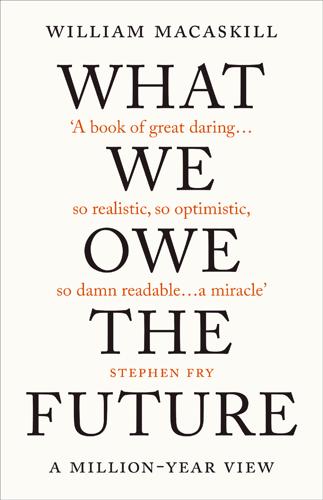
What We Owe the Future: A Million-Year View
by
William MacAskill
Published 31 Aug 2022
While innovative ways to improve these capabilities have been proposed, it is unclear whether we will get there.116 Worse, solving decarbonisation through the wrong mix of technologies might backfire: the final way we might continue to burn a lot of fossil fuels is if we make extensive use of carbon capture and storage. Carbon capture and storage involves capturing carbon at point sources such as power plants and then burying it underground. Carbon can also be captured from the ambient air in a process known as “negative emissions.” Carbon capture would remove a large fraction of the environmental costs of fossil fuels (though the terrible air pollution costs would remain). Consequently, carbon capture would weaken the reason for environmentally motivated governments to stop burning fossil fuels in the first place. This is great insofar as it reduces damages from climate change.
…
See immigration Milky Way, 28, 189 Mill, John Stuart, 99 Mohists (China), 76, 83 moist greenhouse effect, 137 molten glass, history as, 6, 40, 79, 102 Montesquieu, 24, 66–67 Montreal Protocol, 230 Moore, G.E., 214 moral behaviour abolition of slavery, 49–50 AI takeover, 87–88 the contingency of abolition, 63–66 moral regress, 65 over human history, 4 positive trends for civilisation, 20 religious evolution, 59 the results of ideological lock-in, 98 the results of long-term stagnation, 159–163 the value of the continuation of civilisation, 191–193 Moral Capital (Brown), 68 moral entrepreneurs, 72 moral philosophy consequentialists and nonconsequentialists, 241 defining wellbeing, 194–196 the fragility of identity, 173–176 the intuition of neutrality, 171–173 moral uncertainty, 186–187, 214, 260, Parfit’s pursuit of understanding, 167–168 population ethics, 168–189 morally exploratory world, 97–102 Mormon population: falling fertility rate, 158 motivations, asymmetrical, 218–219 Muehlhauser, Luke, 225 multiple equilibria, 57, 60–61 Muslims: the persistence of dietary values, 78 MuZero, 81 Nagasaki, the bombing of, 127–128 NASA (National Aeronautics and Space Administration), 106 nationalism, 53, 62 natural gas, 134–135 Nazarbayev, Nursultan, 85 Nazi Germany forced labour, 65 goal of global domination, 92 Hitler’s sadistic behaviour, 219 ideological lock-in, 97–98 moral evolution, 70 negative emissions process, 141 negative-wellbeing lives, 193–194. See also below-neutral wellbeing neglectedness, 230–231 neurons, weighting the capacity for wellbeing by, 210–211 neutrality, intuition of, 176–177 neutrality of life, 171–173 New Zealand effects of all-out nuclear war, 131 evolution of birds and animals, 56 news media: effect on happiness and wellbeing, 205–206 Nigeria: fertility rate and economic growth, 94 Night of the Long Knives, 60 1984 (Orwell), 97 Non-Anti-Egalitarianism, 181–183, 182(fig.)–184(fig.)
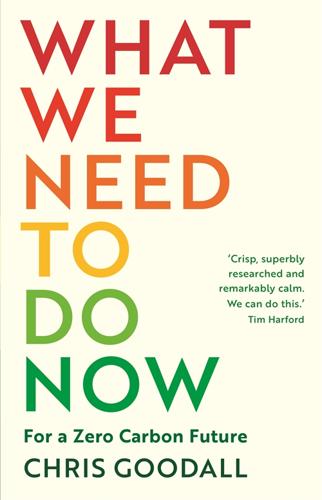
What We Need to Do Now: A Green Deal to Ensure a Habitable Earth
by
Chris Goodall
Published 30 Jan 2020
CHAPTER 9 REFORESTING BRITAIN Using forests and woodland to suck CO2 from the air UK carbon emissions are partially counterbalanced by the takeup of carbon dioxide by trees. Currently, a net 24 million tonnes of CO2, equivalent to about 5 per cent of current domestic greenhouse gases, are extracted by photosynthesis in the UK’s woodlands. Getting to net zero will be helped if we increase the ‘negative emissions’ from trees. However, unless the UK manages its forests better, and increases its coverage, the rate of sequestration by woodland will tend to fall over the next decades. Many of our forests are now old, and the trees are ceasing to grow rapidly, reducing the capture of CO2. The proposal in this chapter is to turn the UK’s poor quality grazing lands, which cover about a sixth of the country, over to forestry.

Making Globalization Work
by
Joseph E. Stiglitz
Published 16 Sep 2006
At the price of $30 per ton of carbon, the annual value of the avoided deforestation—the value of the increase in atmospheric carbon that would have occurred as a direct result of those trees being cut down—is between $30 billion and $40 billion a year. (By comparison, all foreign assistance to developing countries is around $60 billion.) In addition, as we have noted, the forests “clean” carbon dioxide out of the atmosphere. The annual “negative emissions” of the rainforest countries are estimated (using the $30 a ton figure) at some $100 billion a year.20 While Kyoto recognized the role that planting forests could play—countries are given “credit” for planting trees—it did nothing about deforestation. This was a big mistake, for it makes countries like Papua New Guinea doubly better off if they cut down their ancient hardwood trees and replant: they get money from both the cut trees and the replanting.
…
European producers would, of course, get a large credit, because of the high taxes already imposed on oil. 20.The Rainforest Coalition (see below) is not asking for compensation for this, partially because these “cleaning” services are hard to estimate, partially because analogous services are provided by the forests of the advanced industrial countries, including the United States, and these “negative emissions” have not been included in the carbon accounting for them. 21.There are a number of technical details in the implementation of avoided deforestation schemes: for instance, concerning monitoring. Modern technology makes this far easier today than even twenty years ago. 22.The Rainforest Coalition was announced on January 15, 2005, at Columbia University in New York, in a speech by Sir Michael Somare, the prime minister of Papua New Guinea.

How to Blow Up a Pipeline
by
Andreas Malm
Published 4 Jan 2021
A demand such as the prohibition of all new CO2-emitting devices loses none of its relevance at higher concentrations and temperatures, but precisely the opposite; the later in the day, the more imperative to enforce it by any means necessary. Overshoot of targets for climate mitigation calls for more, not less, resistance. This extends to geoengineering scenarios – the onset of solar radiation management, the roll-out of negative emissions technologies – which would rapidly fall apart without concomitant closure of CO2 sources. Until business-as-usual is a distant memory, as long as humans are around, resistance is the path to survival in all weathers; it didn’t become passé in 2009 and it won’t do so in 2029. No one knows exactly how this crisis will end.

Escape From Model Land: How Mathematical Models Can Lead Us Astray and What We Can Do About It
by
Erica Thompson
Published 6 Dec 2022
.: Why Confusing Illusion with Reality Can Lead to Disaster, on Wall Street and in Life, Free Press, 2012 Frydman, Roman, and Michael Goldberg, Beyond Mechanical Markets, Princeton University Press, 2011 Haldane, Andrew, ‘The Dog and the Frisbee’, speech at Jackson Hole, Wyoming, 31 August 2012 Lowenstein, Roger, When Genius Failed: The Rise and Fall of Long Term Capital Management, Fourth Estate, 2002 MacKenzie, Donald, An Engine, Not a Camera: How Financial Models Shape Markets, MIT Press (Inside Technology Series), 2008 March, James, Lee Sproull and Michal Tamuz, ‘Learning from Samples of One or Fewer’, Organization Science, 2(1), 1991 Rebonato, Riccardo, Volatility and Correlation, John Wiley, 1999 Stiglitz, Joseph, ‘Where Modern Macroeconomics Went Wrong’, Oxford Review of Economic Policy, 34, 2018 Taleb, Nassim, The Black Swan: The Impact of the Highly Improbable, Random House, 2007 Wilmott, Paul, and David Orrell, The Money Formula: Dodgy Finance, Pseudo Science, and How Mathematicians Took Over the Markets, Wiley, 2017 ——, and Emanuel Derman, ‘The Financial Modelers’ Manifesto’, https://wilmott.com/financialmodelers-manifesto/, 2009 Chapter 8: The Atmosphere is Complicated Allen, Myles, Mustafa Babiker, Yang Chen, et al., ‘IPCC SR15: Summary for Policymakers’, in IPCC Special Report: Global Warming of 1.5C, Intergovernmental Panel on Climate Change, 2018 Anderson, Kevin, ‘Duality in Climate Science’, Nature Geoscience, 8(12), 2015 Beck, Silke, and Martin Mahony, ‘The Politics of Anticipation: The IPCC and the Negative Emissions Technologies Experience’, Global Sustainability, 1, 2018 Burke, Marshall, Solomon Hsiang and Edward Miguel, ‘Global Non-Linear Effect of Temperature on Economic Production’, Nature, 527(7577), 2015 Edwards, Paul, A Vast Machine: Computer Models, Climate Data, and the Politics of Global Warming, MIT Press, 2010 Hänsel, Martin C., Moritz A.
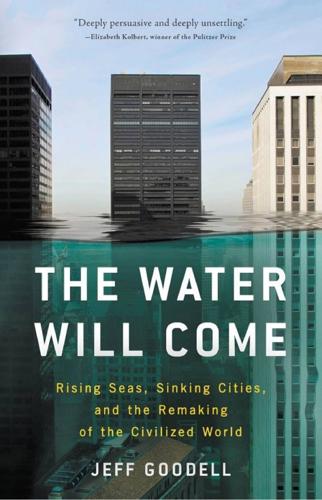
The Water Will Come: Rising Seas, Sinking Cities, and the Remaking of the Civilized World
by
Jeff Goodell
Published 23 Oct 2017
In one presentation, Jae Edmonds, chief scientist at the Pacific Northwest National Laboratory, suggested that one way to radically cut emissions without shutting down the economy would be to capture and bury CO2 emissions from power plants, as well as to replace coal and oil with genetically engineered biofuels, which could potentially create negative emissions if the crops used as a fuel source suck up enough carbon dioxide as they grow. But accomplishing this would require a massive expansion of agriculture, sweeping changes to the world’s energy infrastructure, bold political leadership, and trillions of dollars. Then Lowell Wood approached the podium.
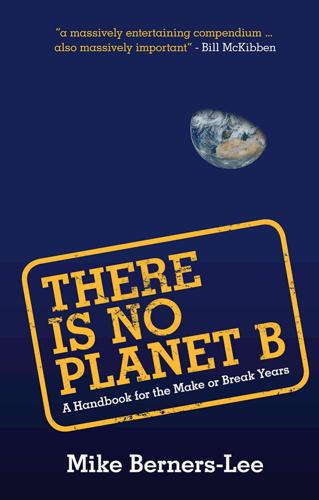
There Is No Planet B: A Handbook for the Make or Break Years
by
Mike Berners-Lee
Published 27 Feb 2019
On every environmental factor, businesses need to do three things, no two of which are enough: (1) cut their impact down, (2) produce goods and services that enable others to do likewise and (3) push, in whatever ways they can, for a global arrangement to cap impacts, especially inputs and outputs to the environment, such as fuel extraction and carbon emissions. No two of these strands are enough. Carbon capture and storage (CCS) Important technology but not a game changer. Taking carbon from big point sources like power stations is helpful while still using fossil fuel, and applied to biofuel power stations could even lead to negative emissions. Storage is not without risk, but then nothing is. It costs money and therefore requires a carbon price and/or subsidy in order to take off. 216 ALPHABETICAL QUICK TOUR Carbon scrubbing (or direct air capture) Potentially a game changer, with the potential to take carbon out of ambient air, either using land and plants or through ‘synthetic trees’.
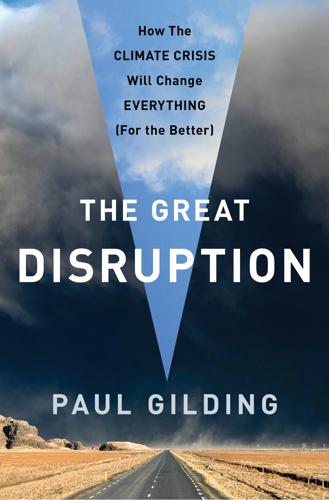
The Great Disruption: Why the Climate Crisis Will Bring on the End of Shopping and the Birth of a New World
by
Paul Gilding
Published 28 Mar 2011
This will be a major global undertaking, requiring full utilization of all technological opportunities, supported by behavior and culture change. 3. Climate Recovery. Years 20–100. This would be the long-haul effort toward global climate control—the effort to create a stable global climate and a sustainable global economy. Achieving this will require a long period of negative emissions (i.e., removing CO2 from the atmosphere) to move the climate back toward the preindustrial “normal.” For instance, some refreezing of the arctic ice cap will require removing CO2 from the atmosphere through geoengineering actions, like burning plantation wood in power stations and storing the emissions underground using carbon capture and storage (CCS).

Enlightenment Now: The Case for Reason, Science, Humanism, and Progress
by
Steven Pinker
Published 13 Feb 2018
The myth of the rational voter: Why democracies choose bad policies. Princeton, NJ: Princeton University Press. Caplow, T., Hicks, L., & Wattenberg, B. 2001. The first measured century: An illustrated guide to trends in America, 1900–2000. Washington: AEI Press. CarbonBrief. 2016. Explainer: 10 ways “negative emissions” could slow climate change. https://www.carbonbrief.org/explainer-10-ways-negative-emissions-could-slow-climate-change. Carey, J. 1993. The intellectuals and the masses: Pride and prejudice among the literary intelligentsia, 1880–1939. New York: St. Martin’s Press. Carey, M., Jackson, M., Antonello, A., & Rushing, J. 2016. Glaciers, gender, and science.
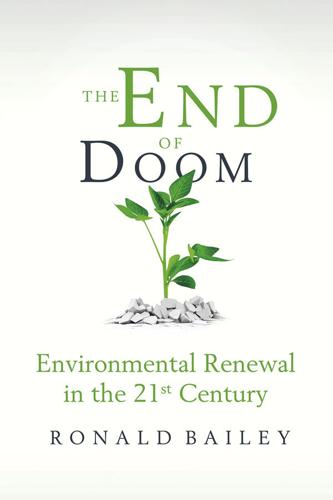
The End of Doom: Environmental Renewal in the Twenty-First Century
by
Ronald Bailey
Published 20 Jul 2015
One such carbon dioxide removal proposal is called bioenergy carbon capture and storage; this involves cultivating plants to absorb carbon dioxide as they grow and then use them as fuel to produce energy. When the plants are burned, the carbon emissions are captured and buried, resulting in negative emissions. Another proposal is direct air capture, a possibility offered by Columbia University researcher Klaus Lackner; this involves using a specific resin that absorbs atmospheric carbon dioxide a thousand times more efficiently than trees do to capture the gas and then store it underground. Oddly, some environmentalists who profess to be very concerned about the dangers posed by man-made global warming fiercely oppose research on these geoengineering technologies.

Boom: Bubbles and the End of Stagnation
by
Byrne Hobart
and
Tobias Huber
Published 29 Oct 2024
By accelerating the transition off of coal, natural gas fracking has thus extended humanity’s atmospheric runway, even as it adds carbon to the atmosphere. At best, fracking is a transitional technology, but it could still play an important role in the shift to climate technologies, including negative emission technologies that could help remove carbon dioxide from the atmosphere, which our oil-fueled industrial system will continue to produce for the foreseeable future. And, while the US regulatory environment is imperfect, American companies are more sensitive to pollution risk than many countries in the developing world.
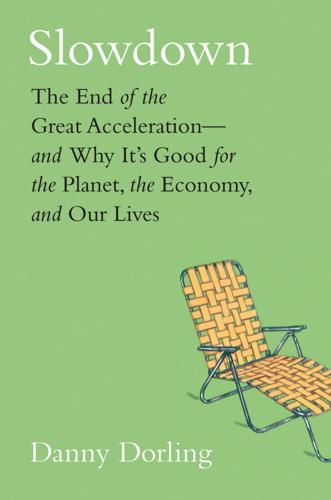
Slowdown: The End of the Great Acceleration―and Why It’s Good for the Planet, the Economy, and Our Lives
by
Danny Dorling
and
Kirsten McClure
Published 18 May 2020
The relationship between the amount of carbon we emit and the rise in temperatures has now been shown to be linear. Understanding this and its implications is what matters most. The message is that if we do not start now, in 2019–20, then we will have to collectively curb our emissions far faster in future or even somehow achieve negative emissions. We would have to find ways of taking more CO2 out of the atmosphere than we put in. This cannot easily be done just by planting trees; they take so long to grow and we generate so much carbon now. But all this does not mean we are doomed if we haven’t reached the target of halving emissions by around 2030.

Open: The Story of Human Progress
by
Johan Norberg
Published 14 Sep 2020
We might see a breakthrough in designer algae, where we change the DNA to make gasoline or jet fuel at a cheap cost. Possibly the best way to deal with global warming is to suck CO2 out of the air. We can do it with trees, of course, but if we don’t have the patience or the room to grow enormous, new forests, we can do it with technology adapted from known industrial processes. One negative emissions plant from the company Carbon Engineering is said to be the equivalent of planting 40 million trees, and might be able to capture a tonne of CO2 for less than $100. We just don’t know what is going to work best, so we have to be open to surprises that might come from a laboratory or a garage anywhere in the world.

Ways of Being: Beyond Human Intelligence
by
James Bridle
Published 6 Apr 2022
Emily Dreyfuss, ‘The Plan to Grab the World’s Carbon With Supercharged Plants’, Wired, 26 April 2019; https://www.wired.com/story/the-plan-to-grab-the-worlds-carbon-with-supercharged-plants/. 5. For an example of such a scheme, see John Vidal, ‘How Bill Gates Aims to Clean Up the Planet’, The Observer, 4 February 2018; https://www.theguardian.com/environment/2018/feb/04/carbon-emissions-negative-emissions-technologies-capture-storage-bill-gates. Bibliography The following works, not all of which feature explicitly in the text, were nevertheless crucial to developing my thinking, and any understanding gained thereof. They may be considered honoured ancestors of the present work, and as fertile ground for further exploration.